Due to the number of technical terms associated with buying headphones, understanding the specification details can be quite daunting for a non-techy person.
Quite often we like the look of a pair of headphones but have no idea what certain language or spec data means, and cannot decipher whether the headphones will produce good quality sound and suit our requirements.
In fact, “what headphones should I buy” is probably the most common question I receive by email!
Whether you plan on using your headphones for everyday music, brainwave entrainment audio, self-hypnosis, or audio books, let me break down the most common technical terms for you and tell you what they really mean.
You'll then be empowered to make an informed buying decision.

1. On-Ear
On-ear headphones (seen in the image above) are also referred to as supra-aural headphones.
These are the headphones with a headband and cushioned ear covers that rest on top of your ears.
These headphones won't block out much external noise. They also have a tendency to leak sound to those in close proximity.
So, for example, if you were on a plane or train and had the music turned up to a moderate volume, those within a few meters of you would be able to hear what you are listening to.
Due to bigger drivers (explained later on), over-ear headphones tend to have capacity for better sound, simply because the manufacturers are able to use bigger components, which better amplify and replicate sound.
2. Over-Ear
Over-ear headphones, or circumaural headphones, are very similar to on-ear headphones, in that they cover the ear.
The pads that cover the ears wrap around the ears and therefore offer good sound isolation.
The driver inside of the headphones is positioned further away from the ear and therefore gives you a speaker-like sound experience.
For this reason, over the ear headphones are more popular than on-ear headphones and the choice of most audiophiles (people who are really into sound).

On-ear headphones are bigger but generally produce superior sound. Models are becoming increasingly lighter & comfortable.
3. In-Ear
In-ear headphones are often referred to as earbuds. These are usually the type of headphones you get free with a mobile phone Or MP3 player.
However, like any type of headphones, there is a range of pricing – from budget to expensive.
The more expensive your in-ear headphones the better the sound performance will be, particularly in terms of audio isolation.
In-ear headphones isolate sound much better than over-ear headphones, and therefore won't affect those in close proximity to your listening space.
Cheaper in-ear headphones may not mould to fit your ears very well and will be prone to falling out.
A number of superior brands provide a range of ear tips in the box so that you can find a mould that fits your ears properly.
While top of the range earbuds can provide a very satisfactory listening experience, over-ear headphones in particular have the potential to outperform earbuds in terms of sound quality.
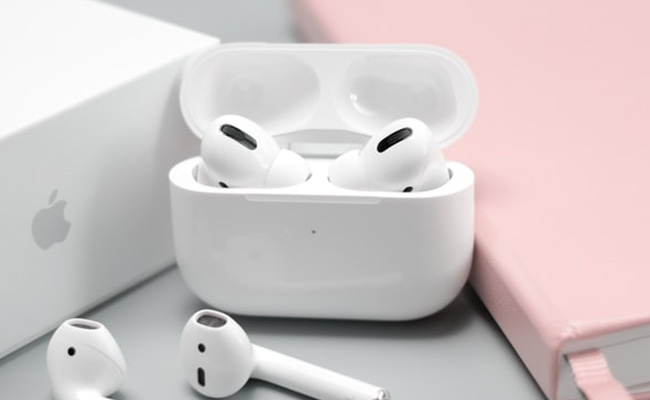
Apple's Airpods are a popular choice for in-ear headphones. The Pro model is water & sweat resistant and comes with silicone ear tips in 3 sizes for a better fit.
4. Open & Closed-Back Headphones
Where over-ear headphones are concerned, you will often see the terms open and closed-back.
Simply put, this terminology indicates whether or not the cups are open or sealed.
closed back headphones seal the sound in and offer better isolation. in this regard, they provide a more in-head experience like in-ear headphones.
Open-back headphones leak sound from the back of the ear cups and allow more ambient noise into the listening space.
Open-back headphones arguably allow for a more natural sound, however; if you don't want to be disturbed, or disturb others, while listening to your music, then choose closed-back headphones
5. Drivers
We previously mentioned the word ‘driver'. This is the most important component in a pair of headphones.
The driver turns an electrical signal into sound pressure, and creates the sound we hear.
There are different types of driver, and obviously the more expensive the headphones the better the driver is (generally) going to be.
All drivers consist of a combination of magnets, voice coils and a diaphragm. The components inside cause the diaphragm to vibrate. It is these vibrations that produce sound waves and interpret the sound we hear.
When looking at your headphone specification details, the driver indicates the diameter of the diaphragm. This is measured in millimeters.
While it is not always true that the larger the driver the better the sound was, it is generally a good rule to go by, certainly in terms of bass performance.
If you're going to go for over-ear headphones, a driver of 40mm+ is a safe bet.
Nowadays, in-ear headphone manufacturers tend to use two drivers to compensate for smaller components.
They use one for the bass and another for the mid and high-range frequencies. This enables them to get closer to the quality and range of bigger headphones.

Wired over-ear headphones are still the primary choice of audiophiles and those who work with professional audio.
+ See my headphones recommendations here
6. Frequency Response
As standard, the majority of headphones have a listed frequency response of approximately 20-20,000 Hz, which is the average capacity of human hearing.
Frequency response is measured in Hertz (Hz) and is the range of frequencies the headphones can reproduce.
Depending on what type of music you will be listening to, you probably don't need to worry too much about the frequency response, as a standard frequency response will be just fine for the majority of cases.
However, if the music you are listening to focuses heavily on low end bass replication, then you should buy a pair of headphones that supports a lower frequency response, perhaps down as low as 10 Hz.
Similarly, if you really want clear high-end frequency sound, choose a pair of headphones with a higher frequency response range, perhaps 25,000 Hz or more.
You might be asking yourself why this would be necessary if humans can only hear 20-20,000 Hz.
Well, firstly, some people can hear outside of this range; and secondly, some frequencies, particularly in the low end, are felt through vibration rather than heard; or, in the higher end, one might say perceived through air, which adds to the listening experience.
7. Impedance
The impedance, measured in Ohms, is a measure of electrical resistance, meaning the higher the impedance the more resistance and the more power required to drive the headphones.
Headphones designed for professional studio use have an impedance rating higher than 80 OHMs, and may go up to 250+. These headphones will require a headphone amplifier or audio interface to drive them.
Headphones designed for use with mobile phones will have a lower impedance around 32 OHMs or lower and will be fine for your phone, MP3 player, iPod, tablet, etc.
Higher impedance headphones are considered better quality and are generally more expensive.
The reason for this is that lower impedance headphones require a higher electrical current.
This electrical current creates vibration, which is interpreted as hiss.
This may not be that noticeable to the average person, but when compared with higher impedance headphones, the difference can quickly become obvious.
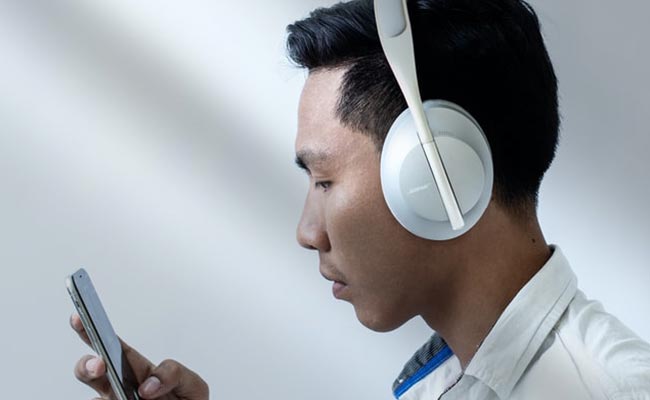
Headphones designed for use with phones may have an impedance as low as 16 OHMs, but go for 32 if possible.
8. Total Harmonic Distortion (THD)
In musical terms, distortion is when you hear a “fuzzy”, “growling”, or “gritty” tone. Total Harmonic Distortion gives us an indication as to how much distortion will occur when using the headphones at high-volume.
The more you increase the volume of the music, the faster the diaphragm has to vibrate to keep up. And when the diaphragm is overworked, distortion occurs.
Look for headphones with a low Total Harmonic Distortion. The majority of headphones you see will have 1% or less, and high-end headphones next to none.
9. Sensitivity & Sound Pressure Level (SPL)
These two terms are part of the same process, and you will usually see one or either on your headphones specification sheet. They provide an indication of the volume capacity of the headphones.
The sensitivity demonstrates how efficiently the headphones turn an electrical signal into an acoustic signal. The sound pressure level measures the sensitivity and is usually displayed in db (decibels).
Most headphones are around 85-120 dB.
For reference, the Occupational Safety and Health Administration advises that hearing loss can occur with prolonged exposure to an SPL of more than 85dB.
In short, it is never wise to listen to headphones at their max SPL anyway, so don't worry to much about this metric. It is highly unlikely your headphones will be too quiet.
10. Noise Cancellation (Active Noise Control)
Noise cancelling headphones make use of a technology called Active Noise Control (ANC), which is a method of reducing unwanted sound through the introduction of a secondary sound that is designed to cancel out the first.
Noise cancelling headphones do this by creating an inverse soundwave and feeding it back into the headphones to cancel out any ambient noise coming in from your immediate environment.
This technology requires battery power (active) to work.
Noise cancellation technology is best suited to constant, low-mid frequency sounds, and isn't as effective for high-mid range and high frequencies.
Also consider that very low frequency bass sounds vibrate through the body and are felt, so these frequencies are impossible to cancel out –unless you are in some kind of specially designed suit that blocks sound waves.
For example, if you are on a train, your noise cancelling headphones will be able to block out quite a lot of the motion noise of the train but wouldn't totally block out the high-pitched sound the doors make when they open and close.
However, the technology is getting better and better at giving the listener an isolated, in-stage experience.
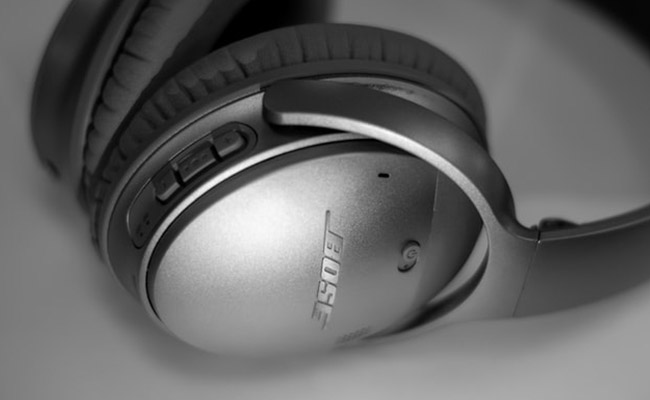
The Bose Quiet Comfort Series are a hugely popular choice of Noise Cancelling headphones.
11. Noise Isolation
Noise isolation is a term heard less frequently today because it is somewhat redundant in the wake of cancelling headphones.
However, it is worth understanding the difference between noise isolation and noise cancellation so that you don't buy the wrong pair of headphones.
Noise isolation means to physically block external sound by covering the ear.
Earlier in the article, we covered over the ear headphones and closed-back headphones, and in-ear headphones – which block the ear canal. Each of these types can be considered noise isolating.
This is a passive technology that doesn't require power to work. Think of this in the same way you would a pair of earplugs: a physical device designed to block sound.
You can't turn it on and off like active noise control; it is only as effective as the materials used.
12. Wired vs Wireless (Bluetooth)
To finish on an easy note, it's worth noting the difference between wired and wireless headphones, the latter often referred to as Bluetooth headphones.
Wired simply refers to the traditional wire that connects the headphone cups or buds to the device. This can be a double or single wire.
Wireless is obviously without a wire at all. Wireless headphones run on Bluetooth technology, which works by using radio waves instead of a wire to connect to your audio device.
In Summary
You will undoubtedly see other terminology in your headphone specification list that is not featured in this article.
But I have deliberately not included more than the above because A. you don't need it, and B. because as a non-tech person you don't want to bamboozle your brain with additional information that isn't a priority in choosing which headphones to buy.
By understanding the terms above, you will be able to choose a good pair of headphones well- suited to your listening needs.
If you want some specific recommendations…
+ See my headphones recommendations here
And feel free to drop any questions you have below, and I'll try to help you navigate the complex world of headphone specifications.

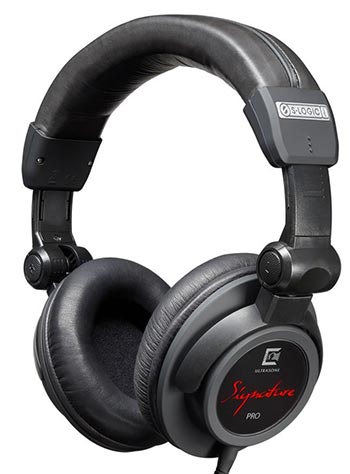
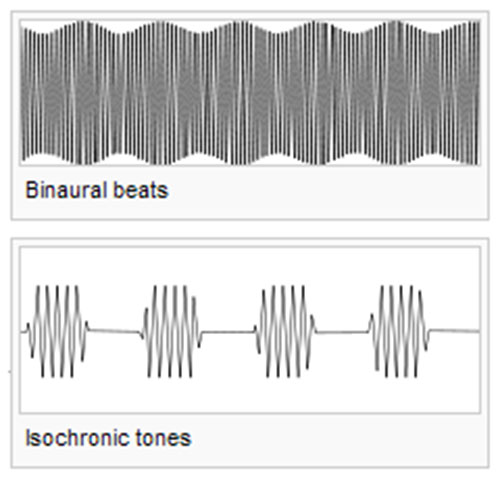
Jackie :) says
Hello!
I just stumbled across your website and I have to say, I feel like a 4yr old on Christmas morning! WOW! Thank you for all your evident hard work! Makes a novice, like myself, feel a little more at ease! You have done an excellent job of doing most research for a novice/new user like myself! I appreciate you more than I can say!
That being said, I just reviewed your page on headphones etc. What would you recommend for a side sleeper? If anything? Again, thank you for being selfless and putting all this together!
bbfreak says
Hi Jackie,
Thank you for your kind words!
I think sleep phones would be best for you. You can find the original brand and copy brands here on Amazon.
They do wired and Bluetooth ones.
All the best! Lawrence.